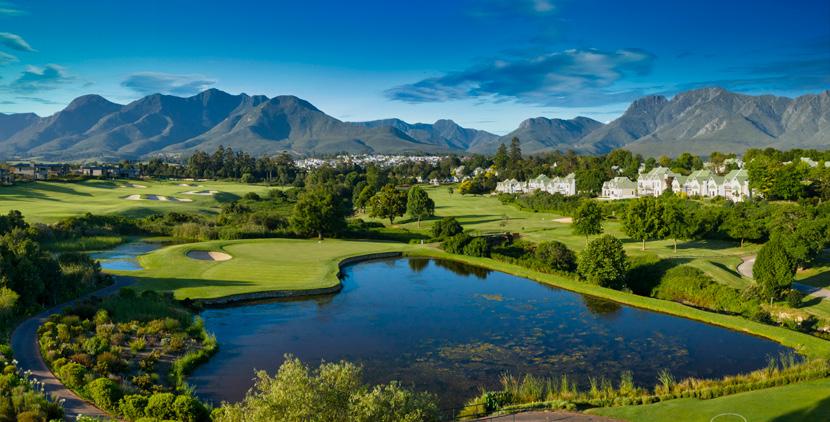MICE MARKETS
AFRICA’S
BIG
5
Meetings unpacks the African Perspectives on the MICE Industry Report’s MICE Industry Maturity Index to understand where the top five MICE markets are on the continent. EGYPT Based on the World Economic Forum’s 2019 stats, tourism contributed 6.2% of Egypt’s total GDP, generating 1.15 million jobs. The Egypt Tourism Reform Programme (ETRP) notes that its overarching objective is to have at least one individual from each household employed in the tourism industry. In this regard, key reforms include the strengthening of international relationships, incentive programmes, and price competitiveness aimed at generating inbound tourism together with the Ministry of Civil Aviation. “To achieve these objectives, marketing and promotion are being used to showcase Egypt’s modern, digital and competitive approach to diversify revenue streams. This also aims to create a more resilient tourism sector by tapping into new source markets. Egypt is one of the only North African countries to explicitly mention refining its presence at international travel exhibitions to fully exhaust its promotional potential,” notes the African Perspectives on the MICE Industry Report 2021. The body responsible for coordinating MICE activity within the country is the Egypt Expo & Convention Authority (EECA), overseen by the Ministry of Industry, Trade and Small Industries. While the reported trade fair data records 87 trade fairs between 2012 and 2015, recent data is unclear and this places the country in a ‘defined’ category according to the report. “Egypt certainly has a formalised tourism sector and the presence of a MICEdedicated body moves it into a defined category, but a lacking clear strategy means it cannot move into a managed category,” says the report’s MICE Industry Maturity Index.
RWANDA World Bank data shows that even before the Covid-19 pandemic, Rwanda was among Africa’s fastest-growing economies, with 9.4% growth in 2019. While experiencing a massive dip in 2020 where growth shrank to -3.4%, the economy rallied to 11.1% in the first nine months of 2021. Rwanda’s top economic hotspots include energy, agriculture, tourism, hospitality, construction and financial services. Although the East African nation’s economy is largely a rural one, the government has its sights set on the country becoming a regional trade hub. In addition, the Rwandan government views the MICE industry as an important economic driver. To this end, a World Bank Group advisory project assisted Rwanda in establishing its national convention bureau in 2014 to grow its opportunities within the industry. Rwanda is also one of the fastestgrowing travel and tourism countries. The nation’s tourism sector is a valuable economic contributor, adding 10.9% to its GDP, with the MICE industry generating a quarter of total visitor numbers in 2019. Figures from the Rwanda Development Board show growth in MICE revenues of 47.3% over the last decade. “The Rwanda Development Board actively positions the region as a leisure tourism destination and an attractive hub for regional and international meetings and events,” says the African Perspectives report. In addition, the country has an established and active convention bureau, placing the country in the ‘managed’ category.
SOUTH AFRICA Stats from the African Development Bank show that prior to the pandemic, South African real GDP growth has been stagnant with just 0.2% growth in 2019. The Covid-19 pandemic adversely impacted the economy, and the country’s real GDP contracted by 7.0% in 2020 but rebounded to 3.0% in 2021. GDP growth is expected to pick up to 1.6% in 2022, The Tourism 2020 report released by Stats SA shows a drop of 71% in foreign travel with under five million
arrivals in 2020. This does, however, reveal that the majority of African visitors are from Zimbabwe, Lesotho, Mozambique and Eswatini. The South Africa National Convention Bureau (SANCB) was launched in 2012 with a mandate to market South Africa as a business events and tourism destination. The SANCB works in tandem with other regional convention bureaus and its strategy is aligned with the country’s National Development Plan. This means that bidding support and funding is
awarded to conferences that support the country’s key economic sectors. The African Perspectives on the MICE Industry Report shows that South Africa’s MICE sector is in a ‘managed’ category and that it is highly formalised, with associations established in each of the subsectors of business events. “The business events sector is recognised as an important subsector in the national tourism strategy, with budget allocations to the SANCB,” says the report.
22 • MEETINGS l MARCH/APRIL 2022 www.theplanner.guru

